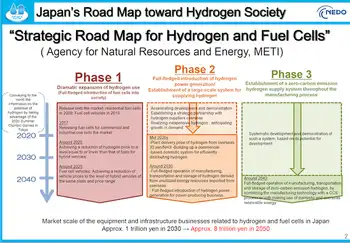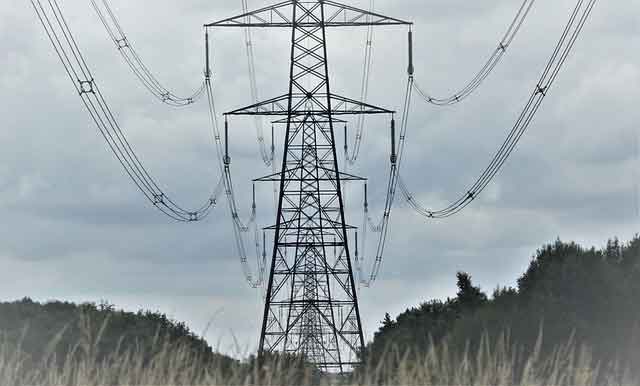Calgary in the EV slow lane
Keating never expected the machine would cover long distances, and he discovered after a couple of years his lead-acid batteries had weakened and just weren't up to the task.
Despite his fascination with electric mobility, Keating, who drives a Toyota Prius hybrid, says he won't be first in line when new Lithium-ion battery-powered electric vehicles launch in Canada in the coming months.
"I keep waiting for the plug-in hybrid," Keating says, expressing a case of "range anxiety," or the worry that his batteries will die in an electric vehicle before he reaches his destination. "I still want to be able to get in my car and drive to the coast."
After years of hype, electric vehicles are finally ready to roll this season. While many jurisdictions are welcoming the cleaner-burning vehicles — California, for example, is offering a raft of incentives to consumers, including a $5,000 US rebate and even free parking in some cities — Canada has been relatively quiet on the topic. And many Canadians are expressing the same apprehensive wait-and-see attitude as Keating. In a big, cold country like Canada, will electric cars catch on?
That's the question — along with some myths — advocates of electric vehicles are scrambling to address.
"There now seems to be a global acceptance that electric vehicles are the way to go," says Al Cormier from his Toronto office. "We've got to try to wean transportation away from oil."
Cormier is executive director of Electric Mobility Canada, a not-for-profit organization representing all things electric-powered, from automobiles and light trucks to trains and bicycles.
He says people are concerned about the environment, and adds that traditional fossil-fuel-powered transportation is a major contributor of emissions. "The transportation system is almost 100 per cent dependent on cheap oil," he says. "There will be significant price increases in oil in the foreseeable future."
One of Electric Mobility Canada's goals is to reduce the amount of fuel used by urban transportation, and Cormier says the group is helping create guidelines and codes for the effective implementation of electric vehicles and the services they will require.
Cormier sees his work as important, because 19 of the G20 countries are setting targets for electric vehicles, and most have incentives in place. "The strange exception is Canada. We have yet to hear a national statement of policy from the government about EVs. I'm not saying they're against them, they have been supportive. But it would be nice to hear the prime minister or a cabinet minister speak about EVs," Cormier says.
Some pure electric vehicles are here already. Tesla's battery-powered electric roadster hit Canadian streets earlier this year, and within the next year, at least two other automakers are launching plug-in electric vehicles -- or battery electric vehicles. These include the Nissan LEAF and the Mitsubishi i-MiEV, which stands for Mitsubishi Innovative Electric Vehicle.
There are, of course, other iterations, including Chevy's Volt and Toyota's Prius plug-in hybrid electric vehicles. These are both able to run on electricity, gasoline or a combination of those sources — and both are set to launch in 2011.
Calgary got an up close look at the Mitsubishi i-MiEV when the automaker came through town with its Clean Across Canada Tour. Although the i-MiEV wasn't designed to drive 7,500 km across the country from St. John's to Vancouver, Mitsubishi decided the tour was a unique way to showcase the electric car it plans to sell here late in 2011. Plus, Mitsubishi wanted to have the i-MiEV in Vancouver for the Electric Vehicles 2010 Conference and Trade Show. There, more than 60 speakers and automakers are gathering to discuss electric vehicle technologies and innovations, and show off new products.
"We wanted to let the Canadian people know this is not a future technology," said Tomoki Yanagawa, vice-president of sales/marketing and corporate planning for Mitsubishi Motor Sales of Canada, Inc., during his Calgary stop. "This is today, and it's coming. The i-MiEV is one of the more practical solutions for decreasing vehicle emissions."
Mitsubishi's i-MiEV is powered by a small but efficient electric motor, and when its 330-volt, Lithiumion battery is fully charged, the car should travel 120 km, at a maximum speed of 130 km/h. This is not a golf cart, or a low-speed electric vehicle that is not legal to drive on the highway.
"The i-MiEV is engineered to replicate the day-to-day driving experience," Yanagawa says, "but the difference is you don't hear an engine."
Range anxiety is a real concern to automakers, but they address it with statistics. When the battery electric vehicle is used solely as an urban commuter or runabout, there should be no problem. According to 2006 data from Statistics Canada, 36 per cent of the driving population travelled five km or less from home to work. And in Canada, 89.5 per cent of the population drives less than 60 km a day.
There's also some concern about how well an electric vehicle will perform in Canadian weather, with our extreme fluctuations from hot to cold, but Yanagawa assures there is both air conditioning and a heater in the i-MiEV.
These creature comforts will draw power from the main battery, and as the temperature drops so too will the driving range.
When the i-MiEV goes on sale, the car will come equipped with a cord to connect the vehicle to a 110-volt standard household outlet. This is called Level 1 charging, and it will take 14 hours from flat to full.
Level 2 charging would involve an electrician wiring into the garage or carport a 220-volt outlet, and charging would take seven hours. Level 3 charging is a whole new game — with voltages of 500 or 600 feeding a special device that would convert that energy into direct current DC and charge an electric vehicle battery in 15 to 20 minutes.
Most adopters of electric vehicles will likely charge at home. But as Rob Harris, director of smart grid partnerships for Calgary's Enmax points out, "Luckily, and that's in quote marks, here in Calgary we've got block-heater outlets readily available in many locations."
If it didn't get so darn cold here, Calgarians wouldn't have the luxury of those block heater outlets.
Enmax recently embarked on a three-year pilot project that will eventually see more than 100 electric vehicles put to the test by company employees.
"Electric vehicles are taking a stronghold in areas that are warmer," Harris says. "I would point to southern California as an example. We keep hearing about the benefits, but we wanted to know if the benefits could be achieved here in Calgary with our extreme weather.
"And, we wanted to see EVs from the driver's perspective."
Another key aspect of the trial is Enmax's ability to assess the impact of an electric vehicle on the electrical grid. According to Harris, charging a battery from flat to full puts as much load on the grid as a house might in a single day.
"If every house had an EV, the electrical draw could double in a neighbourhood — there's no real data on that," Harris says. For lack of a better word, "loggers" will be wired into the employee's home electrical circuits to ascertain just how much juice electric vehicles require.
At the moment, Enmax has no plans to set up or install local Level 3 charging stations anywhere in the city. But that doesn't mean the power company couldn't do it. "That would be something we'd have to take a look at," says Harris. Critics of electric vehicles question just how much emissions would drop when compared to a well-tuned, four-cylinder internal combustion engine. Much electricity in Canada is generated by emission-spewing coal-fired power plants. But according to EMC's Cormier, Canada's electricity generation is among the cleanest in the world.
"We've got power generated by hydro and from wind," Cormier says. "In provinces such as B.C., New Brunswick, Quebec and Newfoundland, virtually all electricity comes from hydro. And look at Calgary's LRT, it's literally powered by wind."
Calgary's a car-loving city. Might we embrace electric motoring? When Enmax wanted to gauge employee reaction to the electric vehicle study, Harris says there was considerable interest.
"Fully 25 per cent of our employees were indicating they would be interested in getting further involved with electric vehicles."
As far as Keating is concerned, he's going to watch closely to see how electric vehicles perform in Canada before making a decision.
"I'd be very keen to test-drive an EV, and while I like the idea of a pure electric vehicle, I'd have to have a long-range car in my garage. "The plug-in hybrid vehicle would seem to be the logical next step," he says. "I'd still want to wait and see what happens with the vehicle's track record, though."
Related News

Calgary's electricity use soars in frigid February, Enmax says
CALGARY - February was so cold in Calgary that the city used enough extra energy to power 3,400 homes for a whole year.
Enmax Power Corporation, the primary electricity utility in the city, says the city 's energy consumption was up 22,000 megawatt hours last month compared with Februray 2018.
"We've seen through this cold period our system has held up very well. It's been very reliable," Enmax vice-president Andre van Dijk told the Calgary Eyeopener on Friday. "You know, in the absence of a windstorm combined with cold temperatures and that sort of thing, the system has actually held up pretty…





